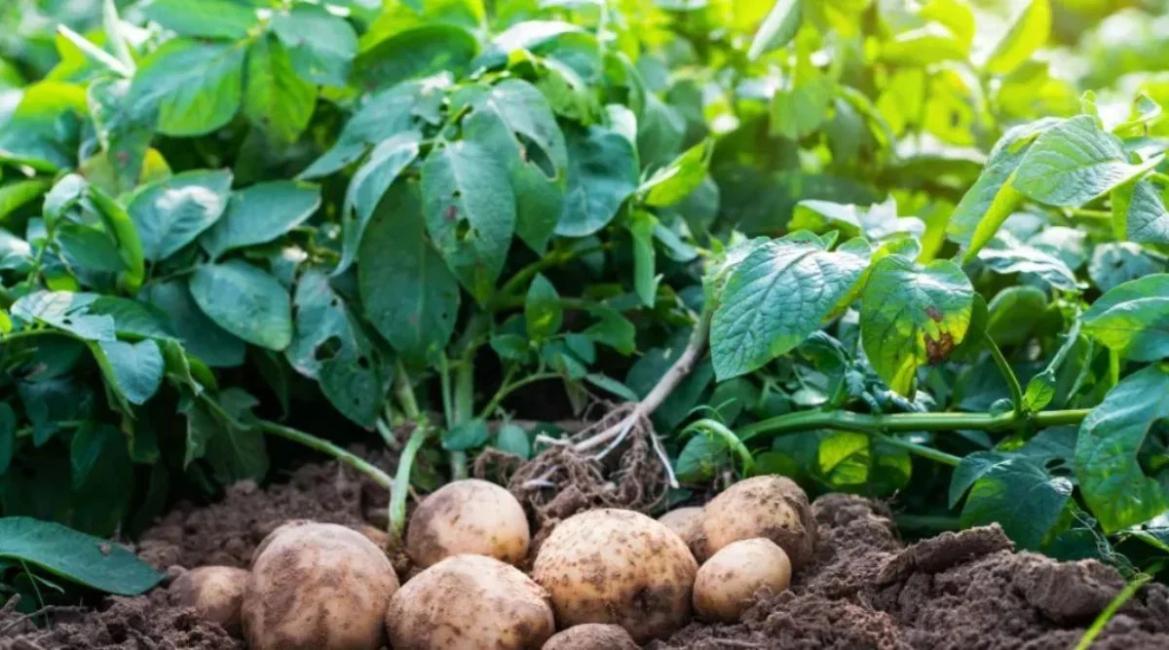Do you want to maximize your land’s productivity? Then allow me to take you through the power of intercropping potatoes and cassava for better yields and soil health!
Today, we are looking into an innovative farming practice that is currently transforming yields worldwide, and that is intercropping potatoes and cassava.
This approach is perfect for maximizing land use, improving soil health, and increasing profits; this technique could change how you farm!
Intercropping potatoes and cassava isn’t just about growing more – it’s about growing smarter. With this method, you’ll enrich your soil, cut back on pests, reduce weeds, and ultimately increase your farm’s productivity.
Intercropping potatoes and cassava is an effective agricultural practice that can maximize land use and improve soil quality. Here’s a step-by-step guide on how to set up and manage this intercrop.

First, why should you intercrop? Well, the answer is to improve soil, cut costs, reduce weeds, and boost yields.
Now these are the strategies and steps to achieve these:
Step 1: Start by preparing your land. Cassava and potatoes thrive best on ridges or mounds. This setup enhances soil drainage and aeration, which is crucial for root health, especially in areas with sandy or erosion-prone soils. Ridges improve drainage and reduce soil erosion.
Step 2: Selecting the right varieties is essential, so you need to choose the right varieties. Look for high-yield, disease-resistant types suited to your climate. Improved cassava varieties grow fast and can adapt to various soil conditions, while robust potato varieties ensure a steady harvest. Choose high-yield varieties for the best results because not all varieties are equal; therefore, you should select only the best varieties from your region.
Read Also: The Complete Guide to Cassava Planting and Processing
Step 3: Next, plant your cassava cuttings and potato tubers. Cassava should be planted first, with enough space between each cutting to allow for the growth of potatoes in between. Once the cassava is planted, you can place the potato tubers in the spaces between the cassava rows. This method ensures that both crops can grow without competing for nutrients.

For maximum results, plant at the start of the rainy season to ensure enough moisture. Use a 1×1-meter spacing for cassava and adjust for potatoes between the rows. This setup gives each plant enough room to access nutrients and sunlight, minimizing competition. Timing matters, and I recommend that you plant at the beginning of the rainy season. You also need to bear in mind that proper spacing equals healthier plants! So use the proper spacing for maximum performance.
Step 4: Weeds compete for resources, so keep them in check early on. Need a good tip? I recommend that you weed 4-6 weeks after planting, then repeat as necessary. Intercropping also naturally reduces weed growth, saving time and effort.”
Step 5: You canmulch with organic materials like crop residues to retain soil moisture and boost fertility, although this is optional depending on the farmer’s location and requirements.
Step 6: Although pests and diseases are less of a problem with intercropping, as the diverse crops create a natural barrier. However, regular inspections can still help you catch issues early and keep your plants healthy.
Generally, throughout the growing season, ensure that you manage the crops effectively. Weed the field regularly to prevent competition for nutrients and moisture. Monitor for pests or diseases that may affect either crop and apply organic or chemical pest control methods as necessary. Ensure that both crops receive adequate water, but be careful to avoid waterlogging, especially for the potatoes.
Read Also: How to Plant Cassava for High Yield
Step 7: Now it’s time for harvest!
Potatoes mature within 3-4 months, allowing you to harvest them first without disturbing cassava roots, while the cassava can be harvested at 10-12 months, making it a perfect staggered harvest system.

The timing of the harvest is important for both crops. Potatoes are typically ready for harvest before cassava. Once the potato plants begin to yellow and die back, they are ready to be dug out of the soil. Cassava can be harvested later when the roots have matured. This staggered harvesting allows you to enjoy the full benefits of intercropping.
What a bountiful harvest, first the potatoes, then cassavas from the same land space; obviously, this is efficiency at its best. And there you have it – a sustainable, productive way to grow more with intercropping.
In conclusion, Intercropping cassava and potatoes offers numerous benefits, such as efficient use of space and resources. Both crops thrive in the same conditions, and intercropping can help reduce soil erosion and improve soil health.
Additionally, this method can increase overall yields and provide a diverse harvest, benefiting both small-scale and commercial farmers, and by carefully managing timing, spacing, and weed control, intercropping cassava and potatoes can lead to higher yields and more resilient crops. This practice is also environmentally friendly, as it minimizes the need for chemical inputs and maximizes soil health.
Read Also: The Power of Environmental Services: How to Make a Difference
